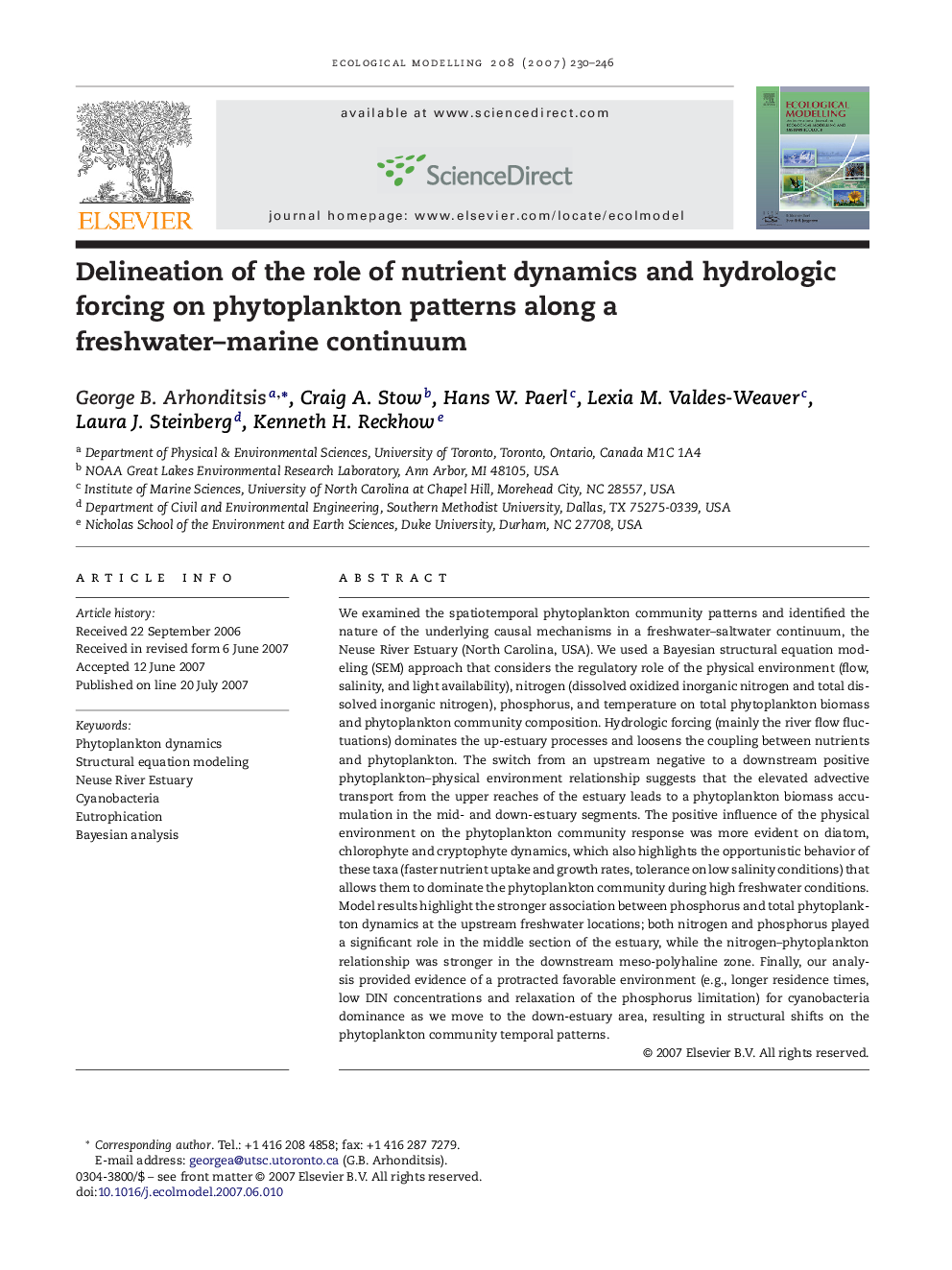| کد مقاله | کد نشریه | سال انتشار | مقاله انگلیسی | نسخه تمام متن |
|---|---|---|---|---|
| 4378412 | 1617542 | 2007 | 17 صفحه PDF | دانلود رایگان |

We examined the spatiotemporal phytoplankton community patterns and identified the nature of the underlying causal mechanisms in a freshwater–saltwater continuum, the Neuse River Estuary (North Carolina, USA). We used a Bayesian structural equation modeling (SEM) approach that considers the regulatory role of the physical environment (flow, salinity, and light availability), nitrogen (dissolved oxidized inorganic nitrogen and total dissolved inorganic nitrogen), phosphorus, and temperature on total phytoplankton biomass and phytoplankton community composition. Hydrologic forcing (mainly the river flow fluctuations) dominates the up-estuary processes and loosens the coupling between nutrients and phytoplankton. The switch from an upstream negative to a downstream positive phytoplankton–physical environment relationship suggests that the elevated advective transport from the upper reaches of the estuary leads to a phytoplankton biomass accumulation in the mid- and down-estuary segments. The positive influence of the physical environment on the phytoplankton community response was more evident on diatom, chlorophyte and cryptophyte dynamics, which also highlights the opportunistic behavior of these taxa (faster nutrient uptake and growth rates, tolerance on low salinity conditions) that allows them to dominate the phytoplankton community during high freshwater conditions. Model results highlight the stronger association between phosphorus and total phytoplankton dynamics at the upstream freshwater locations; both nitrogen and phosphorus played a significant role in the middle section of the estuary, while the nitrogen–phytoplankton relationship was stronger in the downstream meso-polyhaline zone. Finally, our analysis provided evidence of a protracted favorable environment (e.g., longer residence times, low DIN concentrations and relaxation of the phosphorus limitation) for cyanobacteria dominance as we move to the down-estuary area, resulting in structural shifts on the phytoplankton community temporal patterns.
Journal: Ecological Modelling - Volume 208, Issues 2–4, 10 November 2007, Pages 230–246